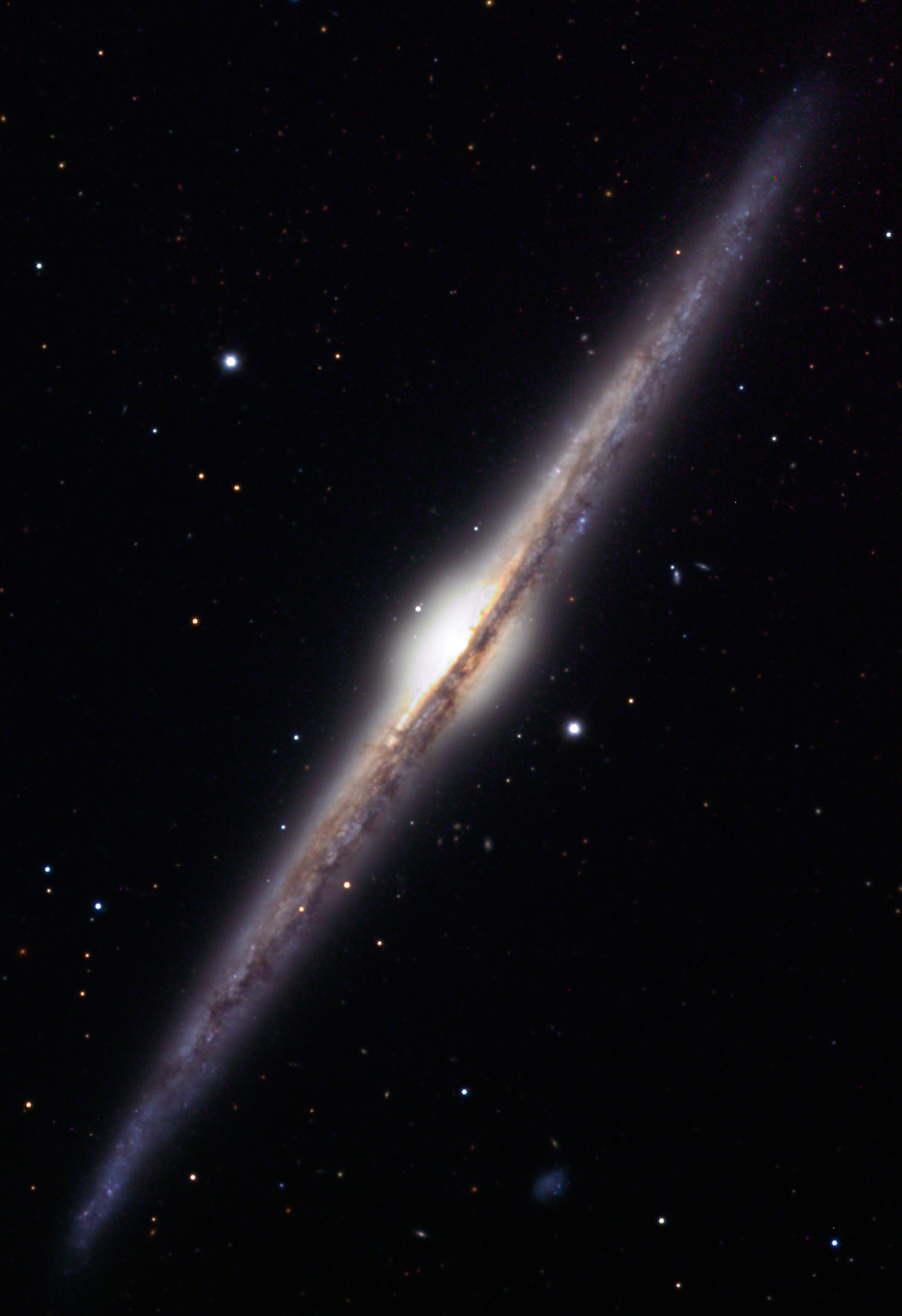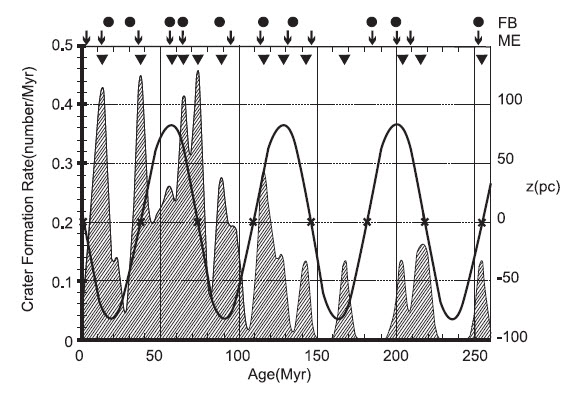Could dark matter cause some mass extinctions and geologic upheavals?
February 19, 2015

NGC 4565, an edge-on spiral galaxy. The stars, dust and gas are concentrated into a thin disc, much like the one in our Milky Way galaxy (credit: Jschulman555)
In Earth’s path around and through our Galaxy’s disc, dark matter may perturb the orbits of comets and lead to additional heating in the Earth’s core, both of which could be connected with mass extinction events, according to a research finding by New York University Biology Professor Michael Rampino.
Writing in an open-access paper published today, Feb. 19, in Monthly Notices of the Royal Astronomical Society, he notes that the Galactic disc is the region of the Milky Way galaxy where our solar system resides.
It is crowded with stars and clouds of gas and dust, and also a concentration of elusive dark matter — hypothesized small subatomic particles that can be detected only by their gravitational effects.
Previous studies have shown that Earth rotates around the disc-shaped Galaxy once every 250 million years, with the Sun and planets weaving through the crowded disc approximately every 30 million years.
Correlation with extinction events
Analyzing the pattern of the Earth’s passes through the Galactic disc, Rampino notes that these disc passages seem to correlate with times of comet impacts and mass extinctions of life. The famous comet strike 66 million ago that led to the extinction of the dinosaurs is just one example.
While traveling through the disc, the dark matter concentrated there disturbs the pathways of comets typically orbiting far from the Earth in the outer Solar System, Rampino suggests. This means that comets that would normally travel at great distances from the Earth instead take unusual paths, causing some of them to collide with the planet.
But even more remarkably, with each dip through the disc, the dark matter can apparently accumulate within the Earth’s core. Eventually, the dark matter particles annihilate each other, producing considerable heat. The heat created by the annihilation of dark matter in Earth’s core — which also show peaks every 30 million years — could trigger events such as volcanic eruptions, mountain building, magnetic field reversals, and changes in sea level,
Rampino therefore suggests that astrophysical phenomena derived from the Earth’s winding path through the Galactic disc, and the consequent accumulation of dark matter in the planet’s interior, can result in dramatic changes in Earth’s geological and biological activity.

Comparison of ages of impact craters, mass extinctions and floodbasalt eruptions, and relation to estimated times of Galactic plane crossings. Probability distribution of crater-formation rate (hatched) (number of impacts per Myr (million years), for the last 260 Myr. The probability distribution has been smoothed by a Gaussian window function with a 3 Myr dispersion. Peaks in the cratering record are indicated by dark inverted triangles; times of mass extinctions (ME, arrows); times of continental flood basalts (FB, dots), all plotted against the Sun’s estimated height above and below the Galactic plane (Z, in parsec), with a half cycle of ∼35 Myr. Estimated times of Galactic plane crossings of the Solar system are marked by X’s. (credit: Michael R. Rampino/MNRAS)
“The history of the Earth is punctuated by large scale extinction events, some of which we struggle to explain,” Rampino said. “It may be that dark matter — the nature of which is still unclear but which makes up around a quarter of the universe — holds the answer. As well as being important on the largest scales, dark matter may have a direct influence on life on Earth.”
He suggests that geologists might incorporate these astrophysical findings to better understand events that are now thought to result purely from causes inherent to the Earth. This model also provides new knowledge of the possible distribution and behavior of dark matter within the Galaxy.
Abstract of Disc dark matter in the Galaxy and potential cycles of extraterrestrial impacts, mass extinctions and geological events
A cycle in the range of 26–30 Myr has been reported in mass extinctions, and terrestrial impact cratering may exhibit a similar cycle of 31 ± 5 Myr. These cycles have been attributed to the Sun’s vertical oscillations through the Galactic disc, estimated to take from ∼30 to 42 Myr between Galactic plane crossings. Near the Galactic mid-plane, the Solar system’s Oort Cloud comets could be perturbed by Galactic tidal forces, and possibly a thin dark matter (DM) disc, which might produce periodic comet showers and extinctions on the Earth. Passage of the Earth through especially dense clumps of DM, composed of Weakly Interacting Massive Particles (WIMPs) in the Galactic plane, could also lead to heating in the core of the planet through capture and subsequent annihilation of DM particles. This new source of periodic heating in the Earth’s interior might explain a similar ∼30 Myr periodicity observed in terrestrial geologic activity, which may also be involved in extinctions. These results suggest that cycles of geological and biological evolution on the Earth may be partly controlled by the rhythms of Galactic dynamics.